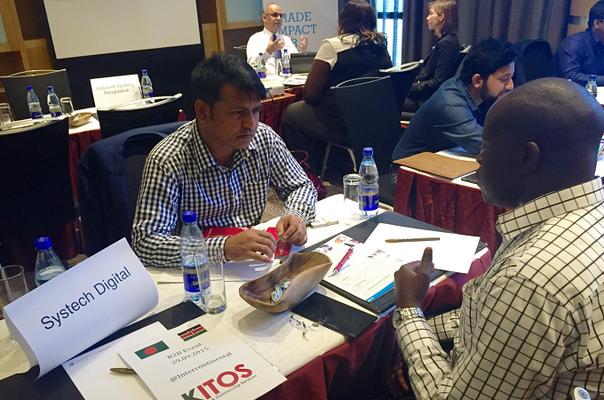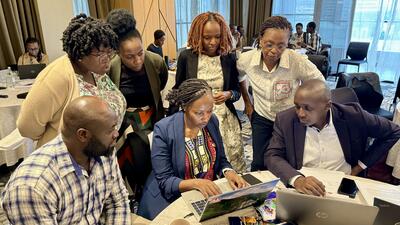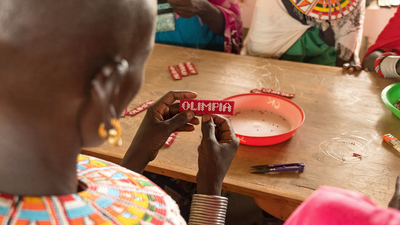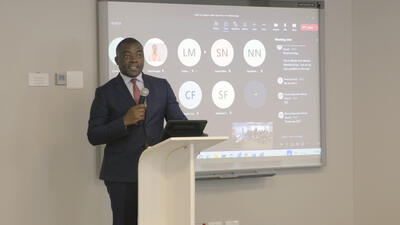
ITC helps key business association develop into growth catalyst of Kenyan tech industry
A few years ago, any Kenyan technology company that was interested in exporting its services was pretty much on its own.
This is no longer the case, thanks to the Kenya IT and Outsourcing Services (KITOS), a women-led trade association representing Kenyan businesses in the information technology enabled services (ITES) sector.
KITOS has ridden a wave of innovation that has established Kenya as a recognized IT hub in East Africa. Multinational tech giants such as Google, IBM, Intel, Microsoft and Nokia all have offices in the country, earning it the moniker ‘Silicon Savannah’.
But KITOS’s success did not happen overnight. When it began operations in 2014, the organization had no secretariat, no service portfolio and just eight paying members. Board members ran the association on a voluntary basis with some part-time administrative support. It was clear that to help strengthen the export competitiveness of Kenya’s IT/ITES sector, KITOS needed to build capacity and develop a sustainable business model.
The organization has made great strides towards these goals in collaboration with the International Trade Centre (ITC) through the Netherlands Trust Fund III (NTF III) Kenya project, which is funded by the Dutch Centre for the Promotion of Imports from developing countries (CBI). KITOS’s membership has tripled in the last two years.
One of the first steps in this collaboration was to benchmark KITOS using ITC’s AIM for Results methodology, enabling the association to understand its strengths and weaknesses – and develop plans to remedy the latter – in areas such as leadership and direction, results measurement, products and service delivery, and internal processes.
KITOS Chief Executive Officer Liz Mwangi praised the benchmarking process for compelling the organization to take a close look at itself. ‘The benchmarking process was very helpful, as it allowed KITOS and the ITC team to answer very specific questions that required us to really review everything about KITOS in detail,’ she said.
The benchmarking report ‘provided KITOS a deeper understanding of specific areas that needed improvement and development of better processes’, Mwangi added.
The benchmarking process continued in February 2016 with the next step in the ITC’s AIM for Results methodology, namely the design of a Performance Improvement Roadmap (PIRM) outlining steps to strengthen KITOS and ensure it can effectively deliver services to its fast-growing membership.
Mwangi says the recent PIRM workshop has helped the association build a step-by-step workplan to fortify priorities identified during the benchmarking process. The initial work being done within the PIRM shows that KITOS can chip away at the weaknesses highlighted by the benchmarking report as the organization builds on it strengths and develops a business model and services portfolio to attract new members and generate revenue, she says.
‘Implementing the PIRM helps KITOS focus on main priority areas that will eventually improve its visibility as a serious, sustainable business membership organization,’ Mwangi explained. ‘Within the PIRM, we were able to map out partners that KITOS can rely on to ensure the success of implementation. KITOS has already met with several stakeholders that are very interested in working with the organization.’
The lessons learned during the benchmarking and the PIRM process have enabled KITOS to segment its members into different categories, she says. An in-depth survey of members and potential members will take this a step further, enabling the organization to offer services tailored to specific businesses’ needs, such as business-to-business matchmaking – a new service that KITOS has already started monetizing.
‘With the work already done and all that is in progress within the PIRM… KITOS can accomplish the activities that will allow it to successfully ensure that all the outputs are implemented, with the intention to ensure KITOS is a sustainable voice and growth catalyst of the Kenyan IT/ITES industry,’ Mwangi said.
The future promises even greater successes for this relatively young industry association – and the small and medium-sized enterprises it serves – once the PIRM is fully implemented.
‘I expect that there will be great improvement in all the areas that were tested during the benchmarking,’ Mwangi said. ‘KITOS will also be able to attract a larger membership base as most companies will be able to understand the relevance of KITOS through our improved strategies, products, services and engagements.’
The benchmarking process continued in February 2016 with the next step in the ITC’s AIM for Results methodology, namely the design of a Performance Improvement Roadmap (PIRM) outlining steps to strengthen KITOS and ensure it can effectively deliver services to its fast-growing membership. AIM For Results is funded by the German Federal Ministry for Economic Cooperation and Development and the Ministry for Foreign Affairs of Finland.
Mr Jarle Hetland
Media Officer
Office of the Executive Director
International Trade Centre
Tel: +41 22 730 0145
Mobile: +41 79 582 9180
@jarlehetland
www.intracen.org
@ITCnews















